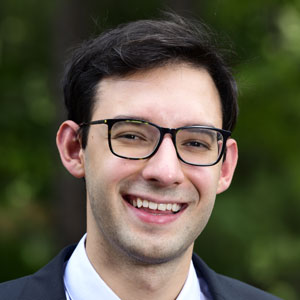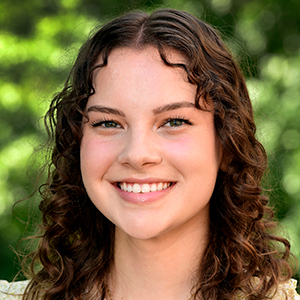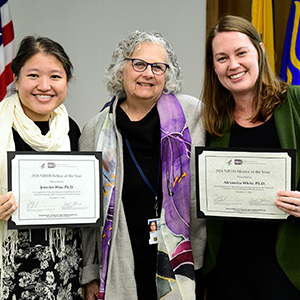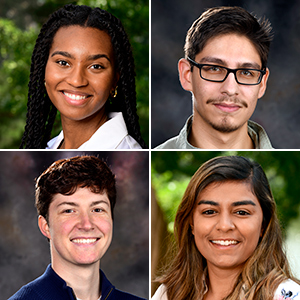Five NIEHS postbaccalaureate fellows competed in the institute’s 3rd Annual Postbac Communication Challenge May 20. They presented their research in three minutes or less, focusing on concision, effectively conveying their ideas to non-specialists, and stage presence. Topics ranged from ways that some chemicals may spur oxidative stress, which can cause DNA damage and disease, to how various environmental factors can affect brain function.
Almost 60 NIEHS staff members and scientists voted for their favorite presentation. Katy Hamilton, who manages the institute’s postbac program, and Gary Bird, Ph.D., from the Signal Transduction Laboratory, hosted the online event.
Weed whacker in a bacterial garden
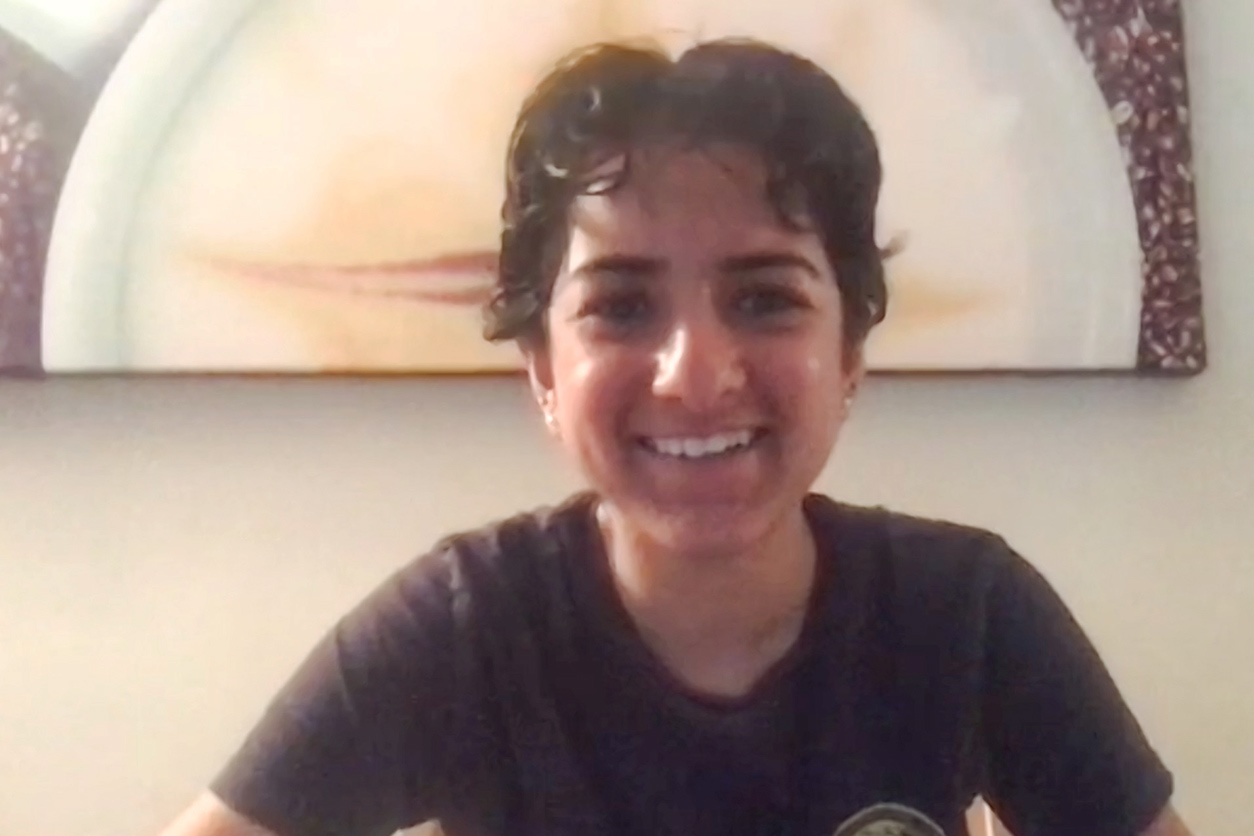 Mehta works under Stavros Garantziotis, M.D., in the Matrix Biology Group. (Photo courtesy of Tammy Collins)
Mehta works under Stavros Garantziotis, M.D., in the Matrix Biology Group. (Photo courtesy of Tammy Collins)Sanya Mehta, an Intramural Research Training Award (IRTA) fellow from the Immunity, Inflammation and Disease Laboratory, won with her talk on idiopathic pulmonary fibrosis. She received a $1,000 professional development award from the Office of Fellows’ Career Development.
“In this disease, small, repetitive lung injuries cause a defective wound healing process, leading to scarring of lung tissue that gets worse over time and has no cure,” Mehta said. “Our question is why? What is it about the genetic makeup of some individuals that causes them to have such an exaggerated response to environmental challenges while most of us don’t?”
Her lab showed that people and mice with deficiencies in a gene called toll-like receptor 5 are significantly more likely to develop the condition. Mehta likened the gene to a weed whacker in a bacterial garden of the lung. The receptor it encodes eliminates weeds and invasive species that contribute to lung injury and scarring but allows good plants — healthy bacteria — to flourish.
Alternative to antibiotics
“Using a mouse model of pulmonary fibrosis, we found that when we used a synthetic, purified form of bacterial flagellin to activate toll-like receptor 5, treated mice developed less fibrosis, lost less weight, and were less likely to die than untreated mice,” she said.
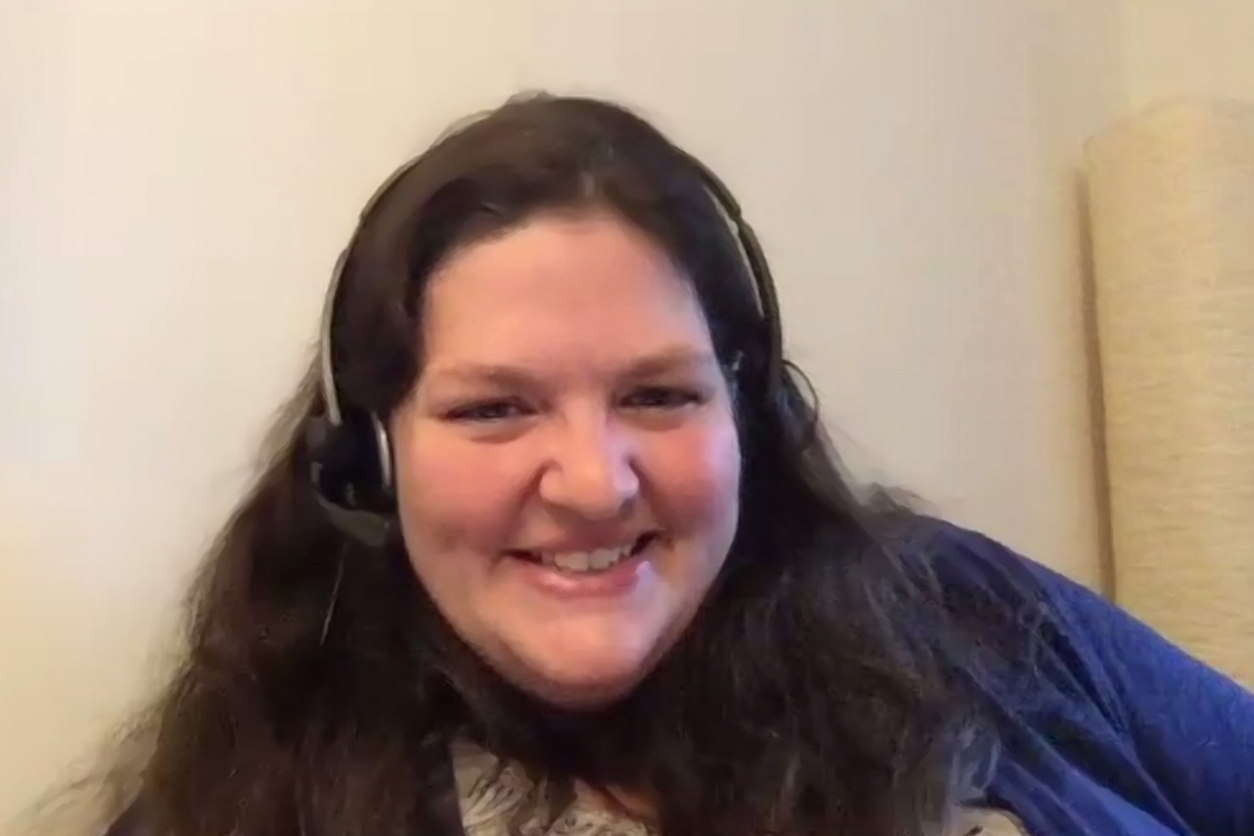 “We are excited for another year of postbac three-minute talks, now for the first time online,” said Hamilton. “Being able to communicate science to a broad audience is an essential skill.” (Photo courtesy of Tammy Collins)
“We are excited for another year of postbac three-minute talks, now for the first time online,” said Hamilton. “Being able to communicate science to a broad audience is an essential skill.” (Photo courtesy of Tammy Collins)“The most exciting part of this research is that this treatment is an alternative to antibiotics,” Mehta added. “So, we can activate the immune system to selectively kill the weeds and invasive species without harming good plants in the bacterial garden. This work may one day be translated back to people as the first-ever preventive treatment for pulmonary fibrosis.”
Taking on brain disorders, harmful chemicals
Other IRTA postbaccalaureate fellows who competed include the following:
- Sydney Fry, from the Neurobehavioral Core Laboratory, helps scientists across NIEHS study links between the environment and brain disorders such as Parkinson’s disease and autism.
- Iris Hernandes, from the National Toxicology Program (NTP) Laboratory, examines how microglia, important immune cells in the brain, may be affected by exposure to toxicants.
- Nancy Urbano, also from the NTP Laboratory, uses human liver cell models to rapidly study many chemicals and determine whether they cause oxidative stress. Screening tools she helps to develop could save time and resources, reduce animal testing, and improve understanding of how toxic substances may contribute to disease.
- Madeleine Weick, from the Molecular Genomics Core Laboratory, uses organoids, which are tissue cultures made from human stem cells, to learn how individuals may be affected by teratogens. Those substances can lead to malformation of an embryo or fetus.
 Bird made sure the fellows did not exceed the three-minute time limit, and he tallied attendees’ votes at the end before announcing Mehta as the winner. (Photo courtesy of Tammy Collins)
Bird made sure the fellows did not exceed the three-minute time limit, and he tallied attendees’ votes at the end before announcing Mehta as the winner. (Photo courtesy of Tammy Collins)Collegiality at the institute
Participants expressed gratitude for the opportunity to hone their research skills at NIEHS.
“The biggest thing I have gained is being able to learn so many topics and be taught by so many people,” said Fry. “I was a student-athlete in college, so being on a team and collaborating with scientists in my lab and across the institute is extremely gratifying.”
(Jesse Saffron, J.D., is a technical writer-editor in the NIEHS Office of Communications and Public Liaison.)





